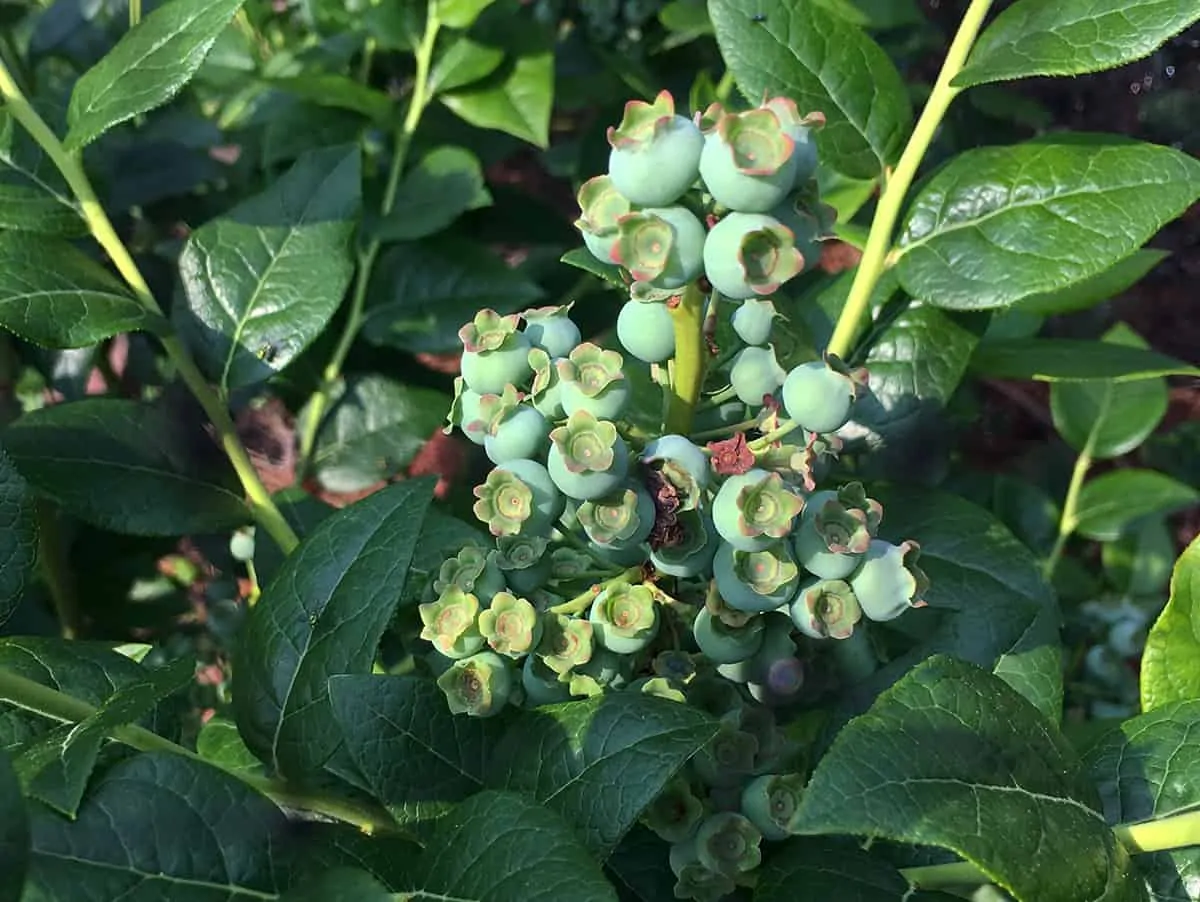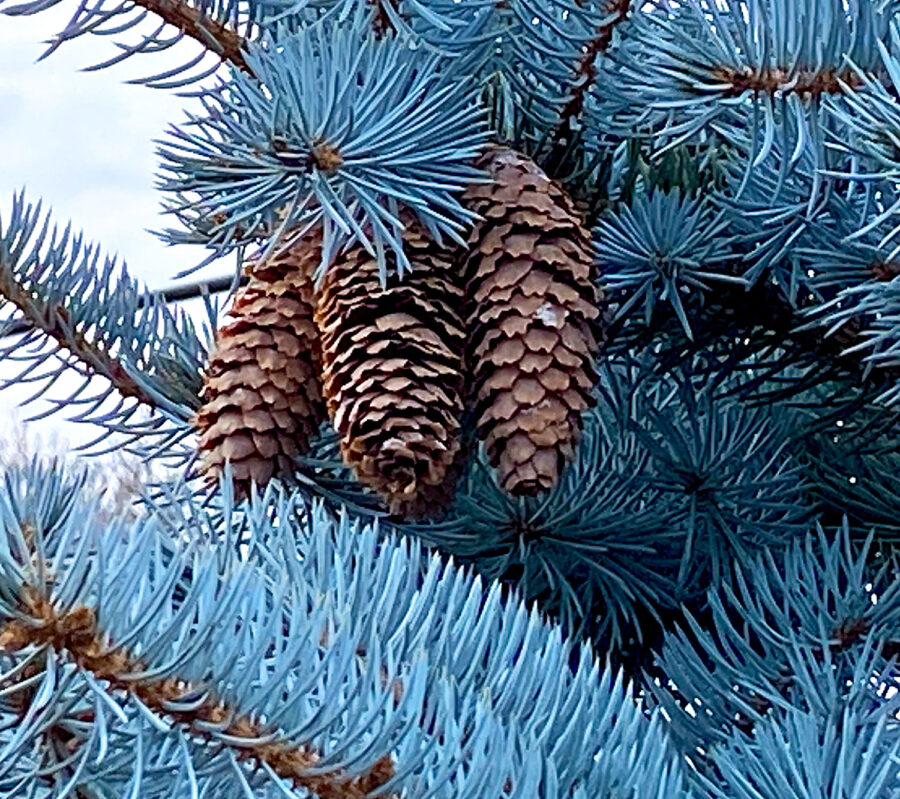Rhubarb’s deep-red ruby stalks, generally known as petioles, and big leaves, convey top and construction to any vegetable or perennial backyard. It’s a attractive plant with stalks that appear to be purple, pink, or inexperienced celery, relying on the variability.
As a cold-loving, easy-to-grow perennial, rhubarb is an early bloomer and one of many first veggie harvests of the spring. Botanically, rhubarb is classed as a vegetable, nevertheless it’s ready like a fruit due to its tart and candy style. It’s incessantly baked into pies, served like applesauce, or canned in jams and jellies.
Methods to Develop Rhubarb in Your Backyard
Recommendations on planting rhubarb
Rhubarb will be began from seeds indoors throughout winter or transplanted from crowns purchased on-line or at your native plant nursery. In contrast to most greens, rhubarb is a perennial. Which means when you plant it, it’s going to develop in that space of your backyard for a few years. So select a sunny spot the place the vegetation will get not less than 6 hours of direct daylight every day and gained’t be disturbed by shady timber or different greens. Rhubarb is just hardy in zones 3-8 as a result of it wants a cold winter with temps constantly beneath 40 levels to supply a candy crop.
To organize the soil earlier than planting, dig a gap 2 ft extensive and a pair of ft deep to offer the roots loads of room to unfold. Rhubarb prefers a loamy soil that drains effectively, and it gained’t tolerate a waterlogged soil. If you happen to backyard the place the soil is usually clay, add compost or peat moss to the soil at planting time and high costume the plant every year with extra compost.
Enable 3-feet between vegetation, however most gardens will solely want one plant, as rhubarb produces a plentiful harvest after the primary few years. Nonetheless, area the plant 3-feet from its neighbors, as this vegetable spreads vigorously. You needn’t be too involved in regards to the soil pH as rhubarb isn’t fussy and can develop almost anyplace. However for optimum efficiency, it helps to have a soil barely on the acidic facet.
Caring for Rhubarb
Rhubarb is a big and thirsty plant and as a way to attain such substantial progress it wants loads of vitamins, water, and natural matter. In early spring, add a excessive nitrogen natural fertilizer to encourage high progress and compost to nourish the crown and roots.
Weekly throughout the rising season, present not less than 1-inch of water within the absence of rainfall. Inadequate moisture and/or constant early season warmth will trigger the rhubarb to turn out to be distressed and even bolt, yielding a bitter and inedible harvest. The vegetation will be inspired to retain their moisture with a layer of mulch on the base of the plant. When the plant produces flower stalks, take away them as quickly as potential as they’re a sign of bolting; you wish to stop the plant from unexpectedly setting seed and reproducing.
Associated Publish: Hellebores: Rising and Care Information
Rhubarb has only a few pest issues
Rhubarb is a hardy plant and stands up effectively towards most backyard pests. Whereas slugs and snails would possibly feed on the leaves, the plant usually endures. One of the simplest ways to maintain pests away from rhubarb is to maintain the world across the plant freed from weeds.
rhubarb harvest
All the time take away the foliage from the rhubarb stalks instantly after harvesting because the greens shouldn’t be eaten.
Harvesting Your Rhubarb Crop
As with Asparagus, enable rhubarb to develop undisturbed for the primary 2 seasons earlier than harvesting. Within the third yr, harvest the stalks for less than 3-4 weeks. After the 4th yr and thereafter you possibly can harvest stalks for 6-10 weeks. However by no means harvest greater than 2/3rds of the plant or it gained’t have the ability to produce sufficient high progress and stalks the next season.
Stalks (generally known as petioles) are prepared when they’re 10-15 inches lengthy, beginning in late winter by late spring. When deciding which rhubarb stalks to reap, select these which might be agency and crisp. Stalks which might be comfortable, limp, or appear broken ought to be eliminated however not consumed. It isn’t essential to take the entire crop without delay, because the stalks will be reduce as you want them.
The most secure technique of harvest is by hand: grasp the stalk slightly below the leaf and pull upwards and to 1 facet. It ought to snap off. By no means reduce stalks from the bottom of the plant as you have to go away about 1/third of every stalk to keep up plant well being. Moreover, don’t use instruments to reap, as they’re infamous for spreading illness. Instruments may encourage you to chop the stalks too near the bottom, exposing plant tissue to potential illness. Instantly after harvesting, take away the leaves from the stalks, as these are inedible. Learn extra about Rhubarb from Utah State College.
Rhubarb will be “pressured” to reap early, producing a paler, sweeter, and fewer crisp vegetable. Rhubarb vegetation coated with forcing jars or buckets in late winter will type stalks with none publicity to the solar. This crop will be harvested in early March, weeks forward of the standard spring harvest.
Associated Publish: Train Your Youngsters Gardening and They will Thank You For it Later
Methods to put together and use Rhubarb
Warning: By no means eat the leaves of Rhubarb, solely the stems. The greens include oxalic acid – a substance toxic to people if consumed in amount. The thick stems—purple, pink, or inexperienced—is the half that’s meant to be eaten. See extra from Oregon State College.
For the reason that rhubarb rising season is so brief, and the crop is so plentiful, freezing rhubarb is a good way to protect the freshness and taste for just a few months. It may also be saved within the fridge for 2-4 weeks. Earlier than freezing or cooking contemporary rhubarb, wash the stalks rigorously to eliminate any grit or dust. If you wish to maintain the rhubarb’s vivid colour, blanch the stalks earlier than freezing.
The flavour of the rhubarb depends upon the actual cultivar: Canada Purple usually produces brief, lean stalks which might be candy; Cherry Purple has lengthy, juicy petioles; Victoria is a noticed inexperienced and purple rhubarb with robust taste. Rhubarb is just too tart to be loved uncooked and is often cooked earlier than it’s eaten. However when you do wish to eat uncooked rhubarb, it is best to first dip it in sugar or candy syrup. It may be baked in a pie, boiled in a jam, or blended in a chilly drink or smoothie.


